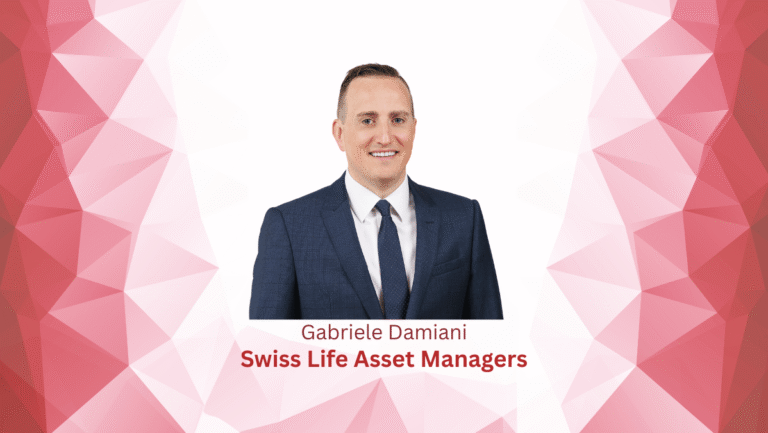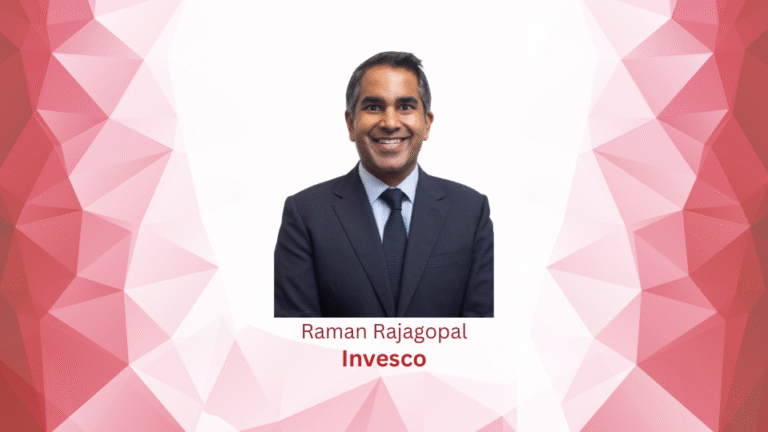By Vanessa Müller, Partner, ESG Services Lead, EY Luxembourg – Matteo Menegatti, Partner, Audit, Private Equity, EY Luxembourg – Anna Illarionova, Senior Manager, ESG Services, EY Luxembourg – and Michelangelo Schenone, Senior Consultant, ESG Services, EY Luxembourg
As a prominent European fund center with deep expertise in sustainable finance, Luxembourg is well placed to accelerate the growth of impact investing. Its strong regulatory framework, international reach, and fund structuring capabilities make it a natural hub for channeling private capital into solutions that address global challenges.
Yet, like other jurisdictions, Luxembourg faces the task of turning ambition into scalable impact. With global momentum building, the country has a unique opportunity to lead by example, fostering innovation and setting standards for how capital can drive measurable change.
Unlocking Capital for Purpose
Impact investing, defined by its dual objective of generating measurable social and environmental outcomes alongside financial returns, has become an increasingly prominent investment approach within sustainable finance. As stated by the Global Impact Investing Network’s (GIIN) State of Market Report (2024), which captures data from 305 impact investing organizations, “it is no longer a niche [but] a dynamic, growing field that is reshaping the future of finance,” reflecting a rising awareness that financial markets can play a role in addressing systemic global challenges. Global impact AUM, considered as the NAV of capital allocated to impact investing strategies, has also grown at a compound annual growth rate (CAGR) of 14% over the past five years, as investors continue to pursue impact objectives across geographies, sectors, asset classes.[1]
Despite the apparent growth of impact investing, international institutions such as the United Nations’ Financing for Sustainable Development Report [2] and the World Economic Forum’s Global Risks Report [3] underline the urgent need to further mobilize private capital to address pressing environmental and social issues, compensating for shortfalls in public capital provision.
Europe’s Role in Scaling Impact Investing and Harmonizing Measurement
In Europe, efforts to align capital with purpose gained stronger momentum with the European Commission’s 2018 release of its Action Plan for financing sustainable growth and redirecting capital flows towards a more sustainable economy.
Today, Western, Northern, and Southern Europe host 37% of impact investors’ headquarters and also represent the second most popular area to attract impact asset allocation, i.e., 23% of global AUM (German Alternative Investment Association (BAI), 2025[4]). Investor interest also continues to rise, with 52% of investors in 2024 planning to increase their allocations to these regions.
However, impact investing in Europe faces certain challenges: regulatory uncertainty and ambiguity, lack of standardized impact measurement, and heightened scrutiny around greenwashing and reputational risk. These are compounded by broader market barriers, including limited investor education and a shortage of scalable investment opportunities.[5]
From a regulatory standpoint, the 2021-born EU Sustainable Finance Disclosure Regulation (SFDR), bound to be reviewed in Q4 2025, does not allow for the full recognition of investors’ active roles in achieving non-financial objectives, treating them primarily as passive capital providers. This has at times resulted in failure to reflect the essence of impact investing, which requires intentionality, contribution, and active management of targeted outcomes. Article 9 funds under SFDR, often viewed as a regulatory proxy for impact-oriented strategies within the EU, may also not always identify as true impact funds. Moreover, SFDR-related discussions focused predominantly (if not exclusively) on its environmental dimension and substantially remained silent on its other equally relevant dimensions, i.e., the social and governance pillars. However, it is important to highlight that the United Nations’ Sustainable Development Goal (SDGs) constitute the macro-policy background of the SFDR and thus of the whole ESG movement itself.[6] In simple words, the environmental aspect is not, and has never been, the sole dimension that the SFDR intended to tackle; it was designed to address a comprehensive range of sustainability issues. To fully unlock the potential of impact investing in Europe and emerging markets, further regulatory evolution is needed.
Impact measurement remains inconsistent across the market. The absence of standardized methodologies for assessing and reporting impact outcomes undermines comparability and investor confidence, making it difficult to validate claims and benchmark performance. Going beyond a sustainable investment objective, impact investing requires defining a targeted impact and understanding how such impact can be achieved by the investor on the basis of an impact pathway. That is why the initiative led by the BAI and the German Impact Investing Initiative (BIII) was launched: to establish a shared understanding of impact investing within the EU Sustainable Finance framework and to advocate for non-binding regulatory guidance that formally recognizes its key principles. By clarifying the role of the investor in generating impact and creating a “safe space” for impact strategies to operate, this initiative aims to unlock private capital and meet the growing demand for credible, scalable impact investing across Europe (BAI, 2025).
Reputational risk and concerns around greenwashing persist, especially as regulatory scrutiny intensifies. ESMA’s recent 2024 fund naming guidelines, mandatory by May 2025, introduced stricter thresholds and exclusions for using terms like “impact,” “transition,” or “sustainable,” reflecting heightened sensitivity to misleading claims. Article 9 funds under SFDR, which accounted for 2.9% of the European fund market as of Q1 2025, fell from the prior quarter’s 3.4%,[7] likely reflecting the impending guidelines’ applicability in Q2 2025. In the absence of clear guidance on what constitutes genuine impact investing, both investors and regulators remain cautious, which can stifle innovation and deter capital flows into the sector.
Rethinking Access to Capital: New Directions in Impact Investing
Traditional impact investing, when applied with rigor and long-term vision, remains a vital mechanism for interventions such as restoring ecosystems and strengthening communities. Eighty-six percent (86%) of investors report that their financial returns are meeting or exceeding expectations, and 90% say the same for their impact performance. Fewer investors report underperformance on impact (4%) than on financial returns (10%), reinforcing the credibility and resilience of the approach.
Yet, as global challenges intensify and investor expectations evolve, traditional models alone may no longer suffice to deliver the scale and systemic change required. This has led to the emergence of complementary strategies that build on the foundations of impact investing. Regenerative finance (ReFi) expands on traditional impact investing by actively seeking to regenerate natural and social capital, moving beyond risk mitigation to systemic renewal. It represents a transformative shift in the financial landscape, leveraging innovative technologies like blockchain to create more equitable and transparent systems, and on AI for more efficient tracing and analysis of impact data.
Blended finance complements both approaches by combining public and private capital to de-risk investments and attract institutional funding into high-impact sectors. Public actors like development banks and foundations often provide concessional capital or guarantees, while institutional investors bring scale and discipline, helping mobilize private capital toward long-term regenerative goals. This layered approach enables diverse stakeholders to invest side-by-side, each pursuing their own objectives while collectively advancing sustainability.[8]
According to GIIN’s Impact Investor Survey 2024, 68% of impact investors recognize blended finance as a key tool for de-risking, and 70% of those who have participated in such deals say they do so to fill market gaps where commercial capital is not available; this is especially effective in areas like climate resilience, biodiversity, and inclusive infrastructure, where early-stage investment often requires public support.
Meanwhile, new technologies are transforming how impact is measured, reported, and verified. Asset managers are leveraging AI to automate ESG disclosures, track sustainability data, monitor portfolio alignment, and validate sustainability claims in real time. These tools enhance traceability and help mitigate greenwashing risks, strengthening the credibility of impact narratives. Together, strategies such as regenerative finance, blended capital, public funding alignment, and responsible use of data and AI offer a forward-looking roadmap for revitalizing impact finance.
Luxembourg in Focus: Resilience, Reach, and Readiness
Within the context of sustainable and impact finance, Luxembourg has emerged as a global leader, consistently ranked first among the top green finance centres by the Global Green Finance Index 2025, in terms of competitiveness and sustainability factors.[9] Its success is rooted in a robust financial ecosystem, forward-looking regulation, and a long-standing commitment to inclusive finance. A key indicator of this leadership is Luxembourg’s dominance in SFDR Article 9 funds, as it hosts 54% of Article 9 fund assets in the EU and leads the impact fund segment within alternatives, accounting for 59% of net assets in this category.[10]
The country’s ability to blend public and private capital through innovative structures such as the Luxembourg-EIB Climate Finance Platform (LCFP), which de-risks private investment in high-impact climate projects, and Investing for Development (IforD), which channels capital into ODA-eligible countries. These platforms exemplify Luxembourg’s ability to mobilize public and private capital for sustainable outcomes.
Accelerators like the International Climate Finance Accelerator (ICFA), supporting emerging climate-focused fund manager and International Social Finance Accelerator (ISFA), focused on social impact strategies, further strengthen Luxembourg’s position.[11] Luxembourg’s House of Startups fosters technological advancement in the field, with the development of new algorithms, and AI solutions to track and enhance impact data quality and management.
Luxembourg’s Reserved Alternative Investment Fund (RAIF) regime has also enhanced its appeal by offering fund managers flexibility and speed to market. RAIFs bypass CSSF pre-approval, relying on indirect supervision via authorized AIFMs, enabling setup within six to eight weeks.[12] Their versatility supports tailored impact strategies across private equity, debt, carbon credits, and impact bonds, with features like umbrella structures, multiple share classes, and adaptable risk and accounting standards.[13][14]
In 2024, the Luxembourg Sustainable Finance Initiative (LSFI) launched the Impact Investing Advisory Board (IIAB) to develop a definition of impact investing targeting the Luxembourgish ecosystem. The proposed definition (currently under consultation) emphasizes intentionality, measurable outcomes, and alignment with social and environmental problem-solving, tailored to Luxembourg’s unique financial landscape.
With strong investor confidence, legal clarity, and alignment with EU priorities, Luxembourg aims to withhold its role as a hub for impact capital and to act as launchpad for next-generation impact products that reflect evolving investor expectations and global sustainability ambitions.
[1] State of the Market 2024 Report. Global Impact Investing Network, September 2024.
[2] Financing for Sustainable Development Report, United Nations, April 2023.
[3] Global Risk Report 2025, World Economic Forum, January 2025.
[4] Why impact investing should be recognised in the EU Sustainable Finance framework and how this could look like, German Alternative Investment Association (BAI) and the German Impact Investing Initiative (BIII), July 2025.
[5] Impact 360 Survey, BlueEarth Capital, August 2024.
[6] What About the S and the G of ESG?, PE Insight Out, June 2024.
[7] SFDR Article 8 and Article 9 Funds: Q1 2025 in Review, Morningstar, April 2025.
[8] Blended Finance What it is, how it works, challenges and best practices, Luxembourg Sustainable Finance Initiative (LSFI), September 2023.
[9] Global Green Finance Index 15 Report, Global Green Finance Index, April 2025
[10] Market Insights 21: The SFDR Fund Market, EFAMA, April 2025
[11] Luxembourg Sustainable Finance Strategy 2030, Luxembourg Sustainable Finance Initiative (LSFI), June 2023
[12] All You Need to Know About the Reserved Alternative Investment Fund (RAIF), Société Générale Securities Services, September 2016
[13] RAIF (Luxembourg Reserved Alternative Investment Fund), Association of the Luxembourg Fund Industry (ALFI), 2024
[14] Insights on RAIF – Innpact Presentation, Innpact, October 2022




